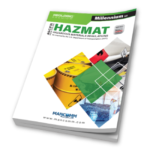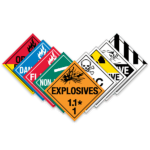
As I’ve mentioned in my previous blogs, it could be beneficial for you if you are shipping hazardous materials in excepted quantities and limited quantities by relieving you from parts of the various regulations. In those cases, there are limits to the amount of dangerous goods allowed per inner packaging if you want to reap the benefits of the exceptions. In addition to those exceptions, there is another one you can use when shipping even smaller amounts domestically by highway or rail within the United States that would relieve you from almost all of the 49 CFR regulations, this is called the small quantities exception.
What are Small Quantities?
Small Quantities are mentioned at 173.4 in the 49 CFR. If you are shipping 30 mL (1 ounce) or less per inner packaging of authorized liquids or 30 grams (1 ounce) or less of authorized solid materials per inner packaging , when you are shipping domestically by highway or rail, you are not subject to the regulations to the 49 CFR other than what is mentioned in this section. In addition to the inner packaging limits mentioned above, the gross mass of the completed outer package can’t exceed 29 kg. The materials included in this exception are quantities of Division 2.2 (except aerosols with no subsidiary hazard), Class 3, Division 4.1, Division 4.2 (PG II and III), Division 4.3 (PG II and III), Division 5.1, Division 5.2, Division 6.1, Class 7, Class 8, and Class 9 materials. If you are shipping a division 6.1 PG I Hazard zone A or B material, the allowable limit per inner packaging drops to one gram (0.04 ounce). Just to note, lithium batteries and cells are not eligible for the exceptions provided in this section.
How can I use this Exception?
Although this exception does relieve you from UN packaging, labeling, placarding, and dangerous goods declarations, there are a few important requirements in regards to the packaging and a few other notes worth mentioning. With the exception of temperature sensing devices, each inner packaging must not be liquid-full at 55 °C (131 °F), and must be constructed of plastic having a minimum thickness of no less than 0.2 mm (0.008 inch), or earthenware, glass, or metal. In addition, each inner packaging that has a removable closure, has to have the closure held securely in place with a positive means such as tape for example. Unless equivalent cushioning and absorbent material surrounds the inside packaging, each inner packaging must be securely packed in an inside packaging with cushioning and absorbent material that will not react chemically with the material and is capable of absorbing the entire contents if it is a liquid. When it comes to the outer packaging, the completed package has to be capable of sustaining free drops at the bottom, top, sides, and corner of the box at 1.8 meters high without breakage or leakage of the inner packaging and without losing effectiveness in the outer packaging as well as the completed package must be capable of passing a stacking test as mentioned in 178.606 (c). While it’s true that you are relieved from the general marking requirements of the 49 CFR, the outside of the package must be marked with the statement “This package conforms to 49 CFR 173.4 for domestic highway or rail transport only.” For more information about small quantities go to section 173.4 in the 49 CFR or if you need absorbents, cushioning, or small inner packaging to ship your small quantities, please call ICC Compliance Center at 1-888-442-9628.
Stay up to date and sign up for our newsletter!
We have all the products, services and training you need to ensure your staff is properly trained and informed.
 US 49 CFR Publications |
 UN Packaging |
 DOT Worded Placards |






 ICC USA
ICC USA ICC Canada
ICC Canada